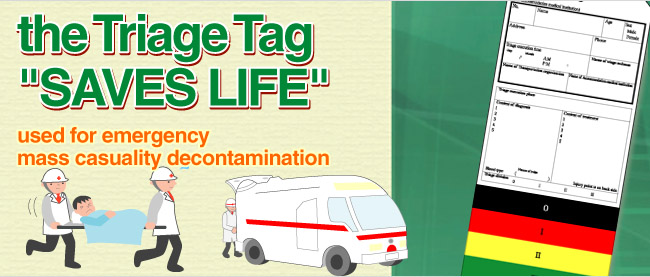 |
Simple triage is usually used in a scene of mass casualty, in order to
sort patients into those who need critical attention and immediate transport
to the hospital and those with less serious injuries. This step can be
started before transportation becomes available. The categorization of
patients based on the severity of their injuries can be aided with the
use of printed triage tags.
Triage separates the injured into four groups:
1. The deceased who are beyond help
2. The injured who can be helped by immediate transportation
3. The injured whose transport can be delayed
4. Those with minor injuries, who need help less urgently
|

FRONT
Click picture to enlarge
|

BACK
Click picture to enlarge
|
 |
 |
 |
Judgement is determined on the following sources.
• Total of injured and sick people
• Acceptable medical institutions
• Transportation capability
• Severity / Prognosis
• On-the-spot emergency measure
• Amount of time to medical attendance
|
A judgment result displays it with a four-colored tag (triage tag), generally
fix in a right wrist of the sick people.
 |
Black (Deceased) |
 |
Patient is needing no care,
they’ve passed away |
 |
 |
Red (Immediate) |
 |
| Patient has life threatening injuries. |
 |
 |
Yellow (Delayed) |
 |
| Patient has non-life threatening injuries. |
 |
 |
Green (Minor) |
 |
| Patient has minor injuries. |
 |
*The priority of transportation and emergency medical care is
I → II → III → 0. |
|

